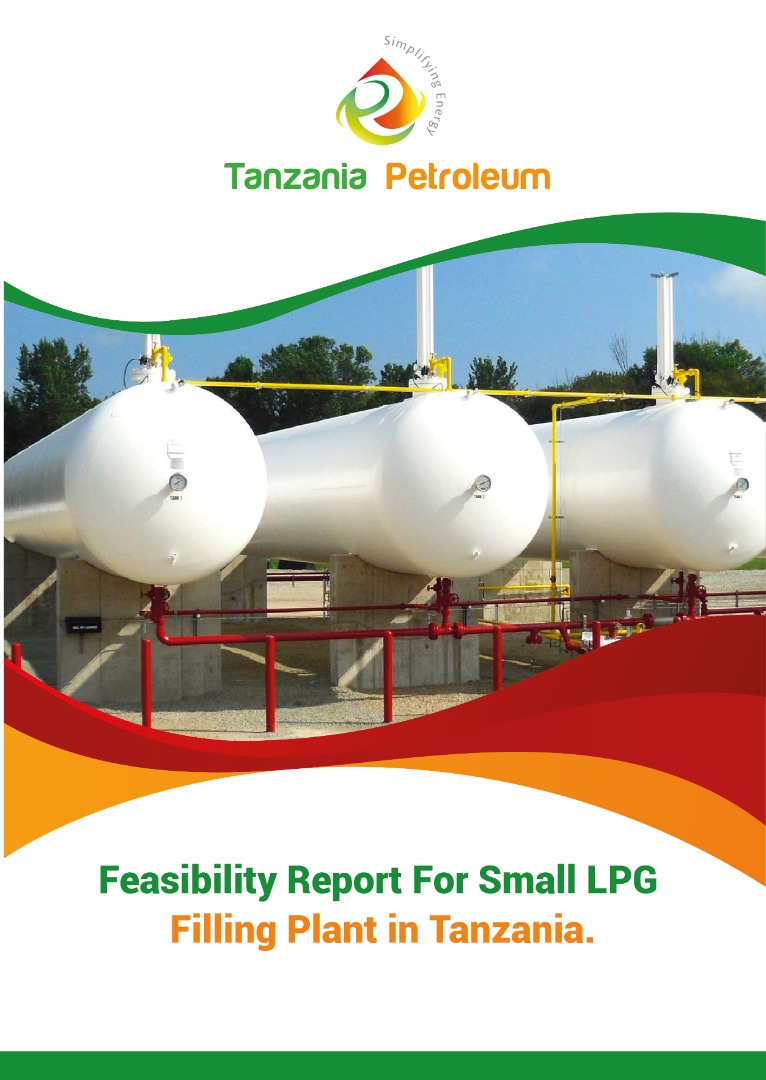Investment Profile/Feasibility Report For Small LPG Plant in Tanzania
- Overview
Tanzania’s population and indeed the rest of Africa, continues to grow year on year and this has continued to put excessive pressure as well as adverse impact on the environment.
The growth in population in turn continues to increase the demand of cooking energy, which is mostly derived from biomass (firewood and charcoal). In the recent years, it is evident that biomass access is becoming increasingly scarce at an unprecedented rate due to continuous decrease of forests (deforestation) due to trees cutting to produce biomass.
In addition, biomass usage generates health diseases especially respiratory and therefore reducing the life expectancy of many people living in rural areas where the use of biomass is predominant.
We all understand the adverse effects of deforestation, which cause climate changes that lead to catastrophic consequences such as drought, floods, storms/hurricanes etc.
There is therefore an urgent need to reverse the ongoing deforestation through provision of alternative cooking energy sources and efficient use of energy through technology improvement for example, of cooking stoves. One of the alternative cooking energy source that helps to eliminate or reduce the health and environmental effects from use of biomass is Liquefied Petroleum Gas (LPG).
However, provision of alternative energy sources such as LPG requires investment in receiving, storage and distribution facilities. LPG is relatively a new source of cooking energy not only in Tanzania but also in many Sub-Saharan African countries and its consumption has been growing exponentially (e.g in Tanzania the average annual growth is about 15%). This growth in LPG consumption has been made possible by relative limited investment in LPG facilities such as LPG receiving Ship to Shore Terminals, network of LPG filling plants in some selected regions and deployment of LPG cylinders used by consumers mainly in urban and peri-urban locations.
With ongoing accelerated LPG consumption growth, it is obvious that the existing LPG facility network will not suffice the expected demand of LPG distribution in Tanzania in the coming years. Based on this growth, it is important that, more investment be encouraged from various local and foreign investors to be able to cope with the growing demand of this product.
This Investment Profile therefore, outlines the key salient features (market structure, investment estimates and required permits and standards) of the LPG industry in Tanzania that are aimed at motivating various investors to venture into this industry through providing some preliminary insights on the key information required to make appropriate investment decisions.
- Objectives
The objective of preparing this Investment Profile is to provide clarity to potential investors in the LPG downstream LPG supply chain in order to increase LPG distribution network that will enhance LPG product accessibility and affordability to remote areas and low-income people who mainly use biomass as their source of cooking energy.
- SCOPE
This profile covers the general overview of LPG industry in Tanzania. It covers Regulatory Framework, high level market structure (product importation, consumption and export, existing players, existing infrastructure, pricing regime, and industry growth trends. The profile also covers the required additional investment based on LPG import/consumption projections, required facilities codes and standards, as well as estimated investment cost structure and list of required equipment/devices for a small LPG filling plant including required
Get the Full Version Now
In the full version, you will have access to the following table of contents:
- Overview of LPG industry in Tanzania
- LPG Regulatory Framework in Tanzania
- LPG Market Structure in Tanzania
- LPG Pricing Structure in Tanzania
- Existing LPG Infrastructure in Tanzania
- LPG consumption projection until 2028
- Required Potential LPG Investment Opportunities in Tanzania
- LPG Infrastructure Investment Cost Structure in Tanzania (This include cost of set up small LPG plant, the equipment and machines you need to have a complete small LPG plant, their prices, and where you can buy them.)
- Required Permits in Small LPG Cylinder Filling Plant in Tanzania (This include licenses, permits, process, timelines, agencies and costs to obtain them)
For the complete LPG investment profile in Tanzania, make a payment of $1500 Tgo pesa, M-pesa to this number: +255655376543. or direct through our company account.
Once your payment is done, send an SMS to +255768183677 or +255655376543 with the following details:
- Your full name.
- Your email address.
Alternatively, send an email with the above details to info@tanzaniapetroleum.com. The moment we receive your email or SMS and we confirm your payment, the eBook will be delivered to your email address (in PDF) within fifteen minutes.
You can then download it and read it on your smartphone or computer.
If you’re not in Tanzania, send an email to info@tanzaniapetroleum.com and we will devise a payment option for you.



